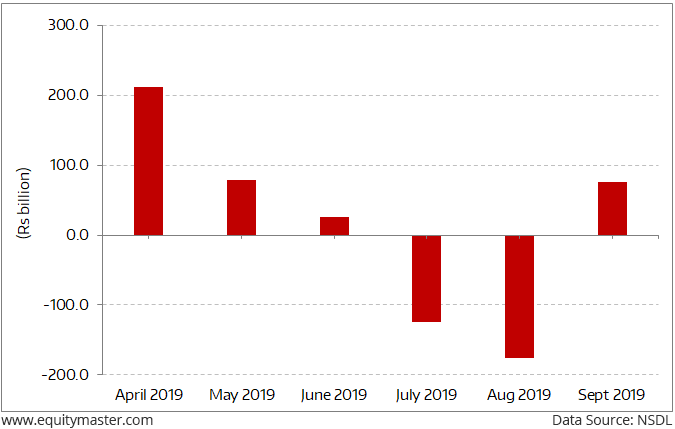India's Third Giant Leap
This Could be One of the Biggest Opportunities for Investors
- Home
- Todays Market
- Indian Stock Market News November 18, 2019
Sensex Turns Negative; Yes Bank and Bajaj Auto Top Losers Mon, 18 Nov 12:30 pm
Stock markets in India are presently trading on a negative note. The BSE Sensex is trading down by 116 points and the NSE Nifty is trading down by 22 points. The BSE Mid Cap index is trading up by 0.1%, while the BSE Small Cap index are trading up by 0.2%.
Among the sectoral indices, automobiles and FMCG stocks are witnessing selling pressure. Telecom stocks and metal stocks are trading in green.
In the news from the currencies space. The rupee today opened 12 paise higher at 71.66 against the American currency, extending its gains for the third session on the back of a positive trend in equity markets and weakness in the greenback against its major crosses.
The local currency on Friday appreciated 18 paise to settle at 71.78 against the US dollar.
Last week, the rupee was weighed down by weaker-than-expected economic numbers. Industrial production as well as inflation numbers were a little disappointing, weighing on overall market sentiment.
FIIs also continued to bring in funds in November and until now have poured funds worth US$2.7 billion, including both equity and debt segment.
Foreign money once again made its way into Indian equities. For one, the tax on the super-rich was not applicable on domestic and foreign investors. The Finance Minister clarified this.
More importantly, they responded positively to the cut in corporate tax rates. The new rates now, makes India globally competitive. This strengthens the case for investing in India.
Foreign Money Returns to India Again
Therefore, foreign money flowed back into the Indian markets last month. They bought Indian equities to the tune of Rs 75 billion.
Essentially, there is no clear indicator that the slowdown is structural. So far, it appears cyclical.
Hence, when the cycle turns, the stock markets will move up too.
Moving on to the news from the economy. With sustained slowdown in almost all the sectors, economic think-tank National Council of Applied Economic Research (NCAER) has said that India's economic growth is likely to decline to 4.9% in the second quarter of this fiscal (Q2FY20).
Earlier, the country's economy grew at 5% in the first quarter of 2019-20 - the slowest pace in over six years.
Besides, the think-tank has pegged Gross Domestic Product (GDP) growth at 4.9% as for the full fiscal 2019-20 against 6.8% in 2018-19.
NCAER further said the monetary policy measures are unlikely to revive growth at this juncture and suggested providing fiscal stimulus, which too can be challenging unless it can be financed through better revenue generation.
It said 'whether the growth deceleration may be bottoming out or not, we will know in next two weeks based on the Q2 growth figures of the government. However, the current poor growth is mainly due to a demand problem. It can be addressed through fiscal measures.'
Stressing that the focus should be on fiscal measures, it said there is a need to pump up expenditure without pushing up the fiscal deficit. It said that there are ways of doing it and added that there is a huge fiscal space which has not been used.
Now, what's in store for the Indian economy going forward remains to be seen.
Volatile markets and some recent economic numbers have confused investors.
In the video, Tanushree Banerjee decodes a few economic myths and reveals three big trends of Rebirth of India.
Tune in...
To know what's moving the Indian stock markets today, check out the most recent share market updates here.
For information on how to pick stocks that have the potential to deliver big returns, download our special report now!
Read the latest Market Commentary



Equitymaster requests your view! Post a comment on "Sensex Turns Negative; Yes Bank and Bajaj Auto Top Losers". Click here!
Comments are moderated by Equitymaster, in accordance with the Terms of Use, and may not appear
on this article until they have been reviewed and deemed appropriate for posting.
In the meantime, you may want to share this article with your friends!